[Explanation of how to boil shrimp] How to freeze shrimp, storage period, and 5 popular recipes!
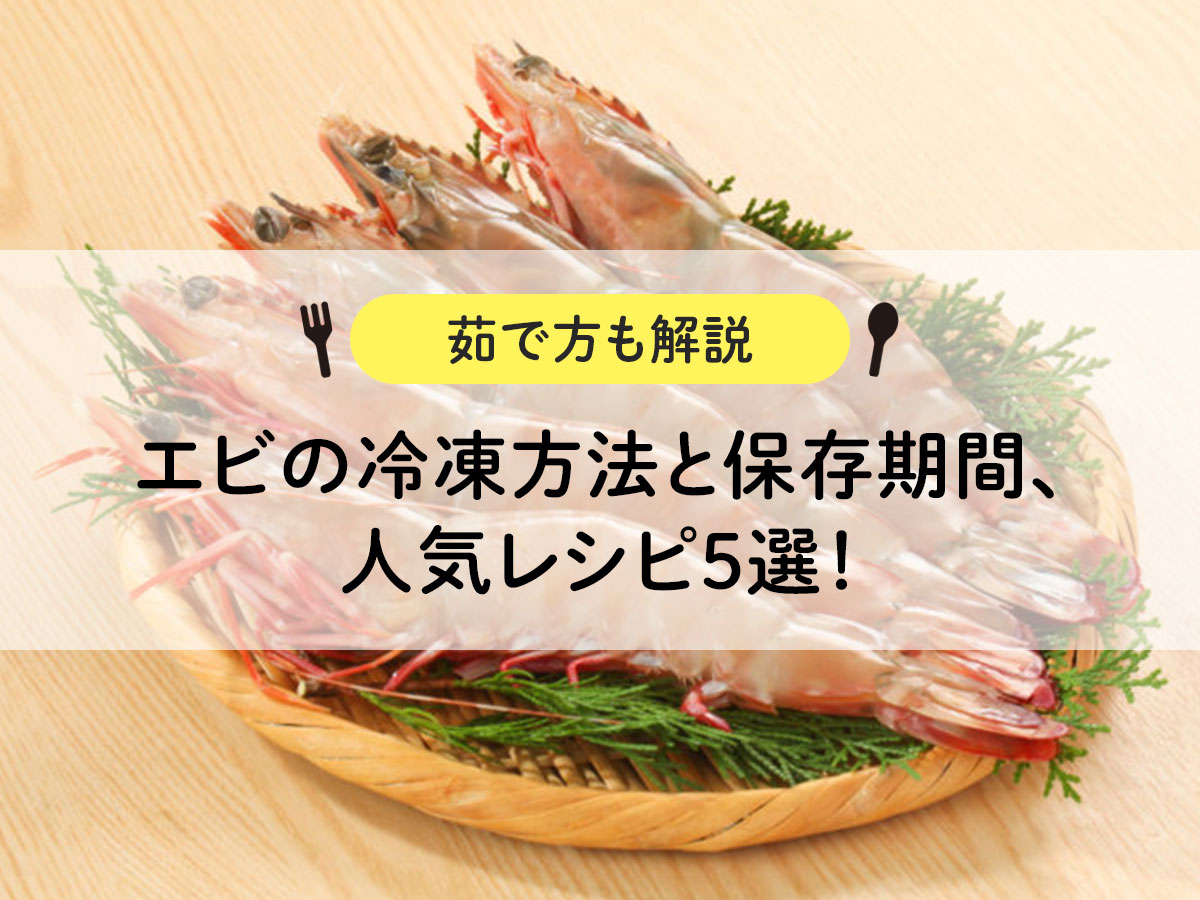
Have you ever had the experience of not being able to use up all the shrimp you bought and having leftovers? In fact, shrimp spoils quickly among seafood and is difficult to preserve.
Even if things look okay on the outside, they often start to deteriorate from the inside. If you get hit by any chance, you will be faced with painful symptoms.
In addition to freezing methods that allow shrimp to be stored for long periods of time, we also provide recommended thawing methods and appropriate storage periods to maintain the plump texture, as well as popular recipes using frozen shrimp, so please take a look. please.
目次
shrimp nutrition
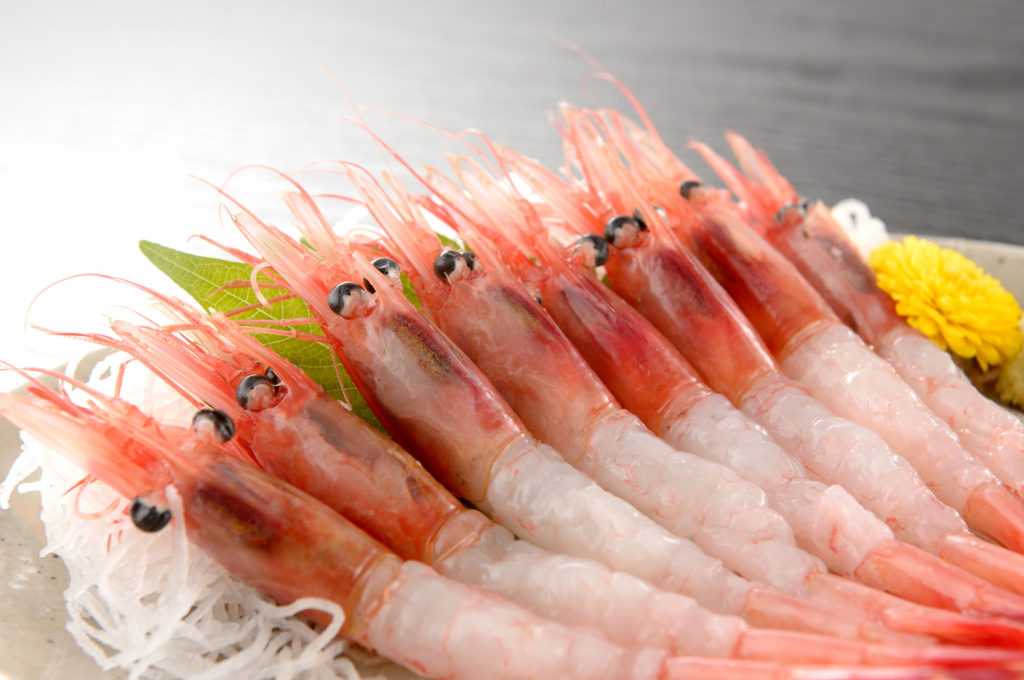
Shrimp nutritional value and calories
Calories are 82kcal per 100g (black tiger raw).
Although it is high in protein, it is low in fat and contains only a trace amount of carbohydrates. Therefore, it can be said to be a very reliable ingredient for those who are concerned about fat and sugar content.
Being a sea creature, it is rich in minerals. In addition, shrimp shells contain astaxanthin, a type of carotenoid, and chitin, an animal dietary fiber.
【mineral】
Sodium, potassium, calcium, magnesium, phosphorus, zinc, iron, manganese, iodine, selenium, chromium, molybdenum
【vitamin】
Vitamins A, E, B1, B2, niacin, B6, B12, folic acid, pantothenic acid, biotin
*Some minerals and vitamins may not be included depending on the species.
Benefits of shrimp
[Fatigue recovery effect]
Shrimp shells contain astaxanthin. Astaxanthin is a type of carotenoid and has strong antioxidant power. It protects cells from active oxygen and repairs damaged cells.
When you exercise, active oxygen increases in your body. Increased active oxygen damages cells and causes fatigue in the body. At this time, when astaxanthin is present in the body, it protects cells or repairs damaged cells. Then, you can get a fatigue recovery effect.
Cell protection and repair functions also lead to beautifying skin.
[Diet effect]
Astaxanthin has another effect, and that is improving lipid metabolism.
Our bodies tend to preferentially consume carbohydrates during intense exercise. When you take astaxanthin, the amount that would normally be consumed from carbohydrates is consumed from fat, so you can reduce the amount of fat in your body.
Also, as introduced in the first part, astaxanthin has a fatigue recovery effect. This also leads to increased stamina during exercise, which accelerates the diet effect.
[Improving liver function]
Shrimp contains the most taurine, second only to octopus and squid.
Taurine has a deep connection with liver function and has a repairing and supporting role. For example, when you drink alcohol, your liver has to work harder to break down the alcohol. At times like this, taurine helps restore and support liver function.
Additionally, taurine has the ability to increase good cholesterol and reduce bad cholesterol. This function reduces blood cholesterol levels, which helps prevent arteriosclerosis.
Advantages of freezing shrimp
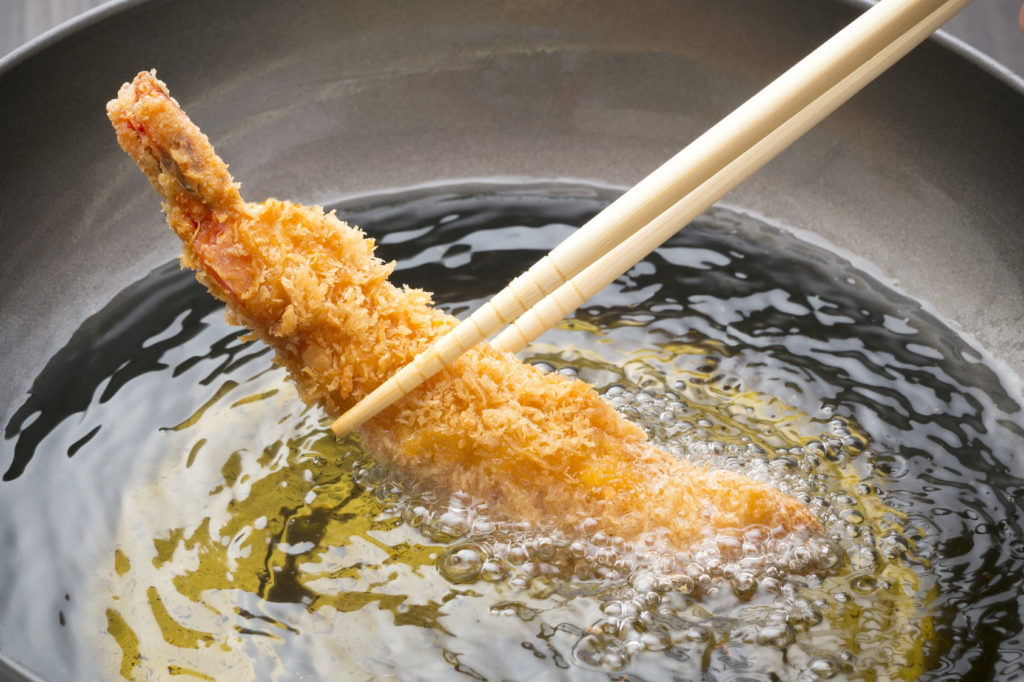
Allows long-term storage
Shrimp is a highly perishable ingredient, so it is recommended to use it the same day you buy it. It is not safe to store it in the refrigerator, so it is best to use it up on the same day you buy it.
In other words, the best option for preserving shrimp for a long time is to freeze it. Once frozen, it can be stored for about 3 weeks.
If you keep these points in mind, you can prevent food from deteriorating during freezing, and you can enjoy the same texture and flavor even after thawing.
Reduces cooking time and effort
The difficulty with cooking shrimp is that you have to remove the devein and shell.
Every time you make a meal, it's a pain to take out a toothpick and remove the prickly backbone. It takes time and effort to remove the crackling shells.
If you use frozen storage, you can prepare a lot of shrimp at once and freeze them all at once, reducing cooking time and effort.
How to freeze shrimp
When freezing raw
1) Wash well and remove the head, back and shell.
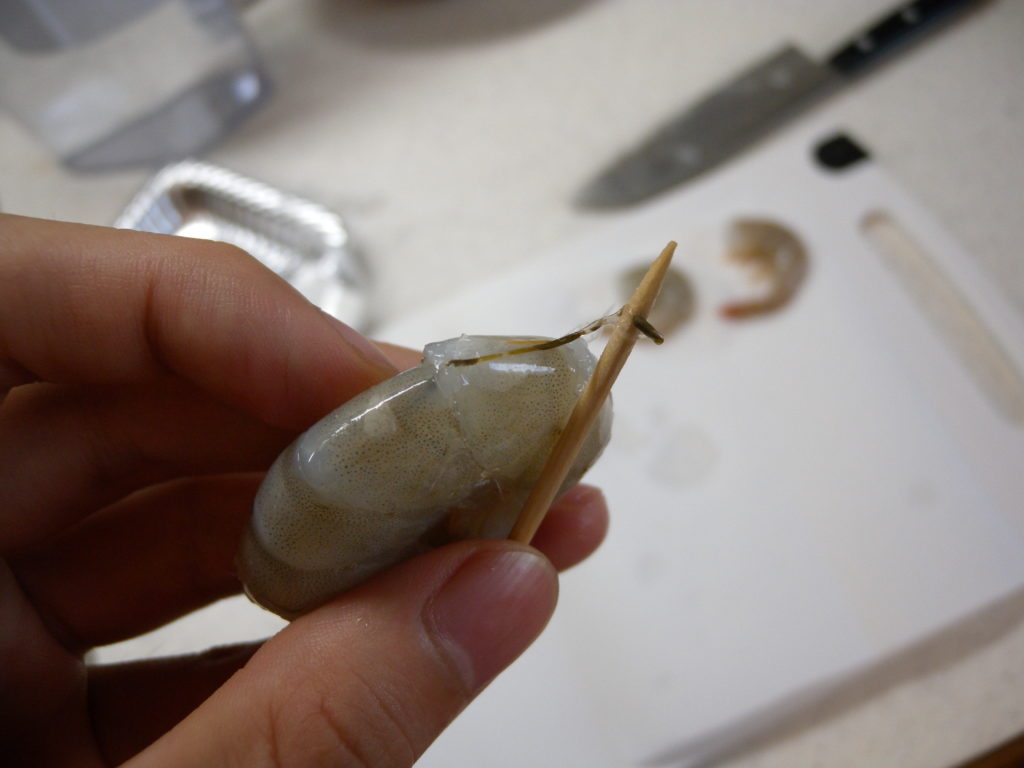
2) Wipe off the moisture, place in a freezer bag and freeze, making sure not to overlap.
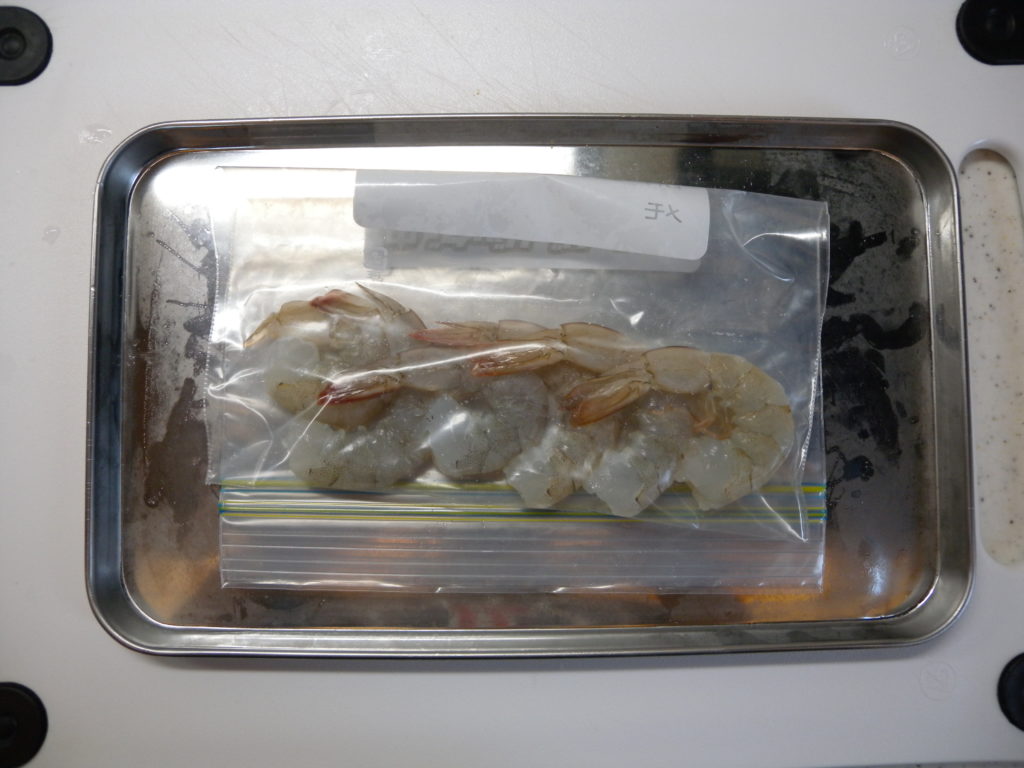
★Suitable for pasta sauce, pilaf, gratin, etc.
When freezing after boiling
1) Remove the head and remove the back with a bamboo skewer (leaving the shell intact).
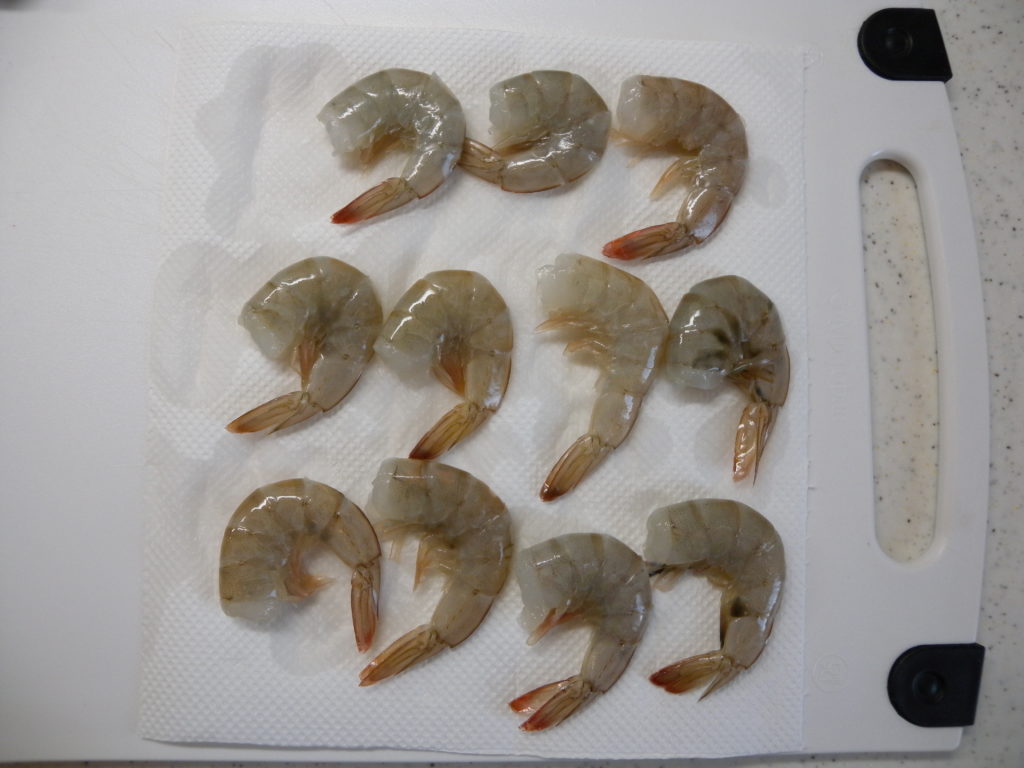
2) Add an appropriate amount of salt and sake to boiling water and boil the shells (use the salt and sake to remove the odor).
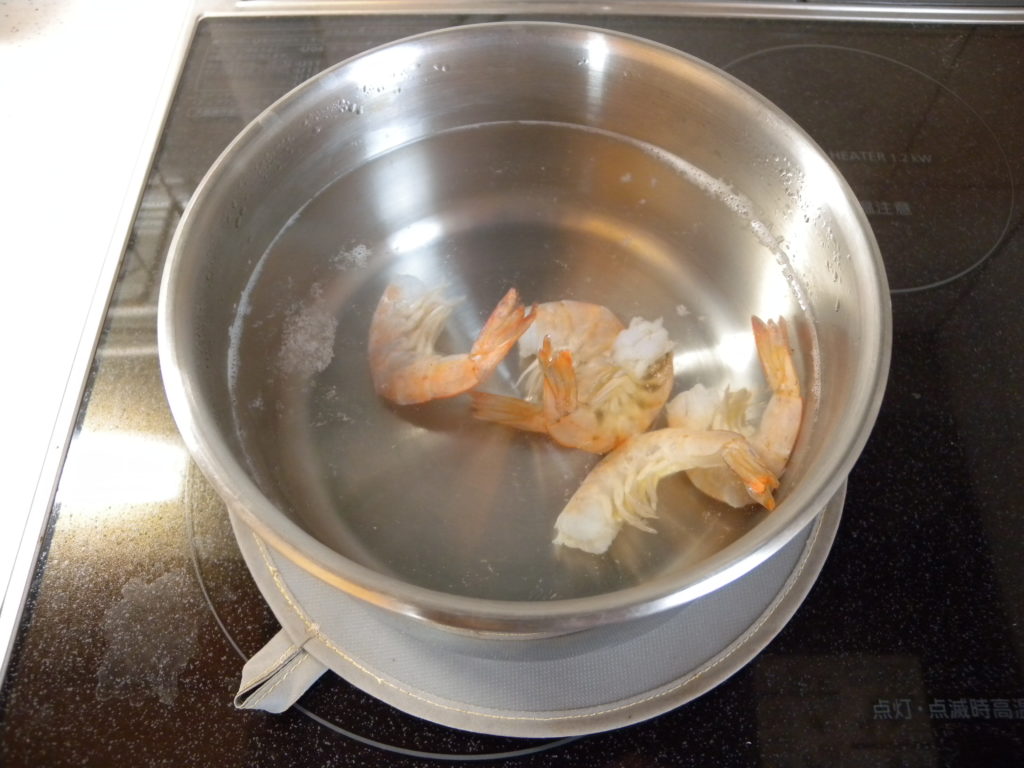
3) When it becomes reddish, take it out, drain the water and let it cool.
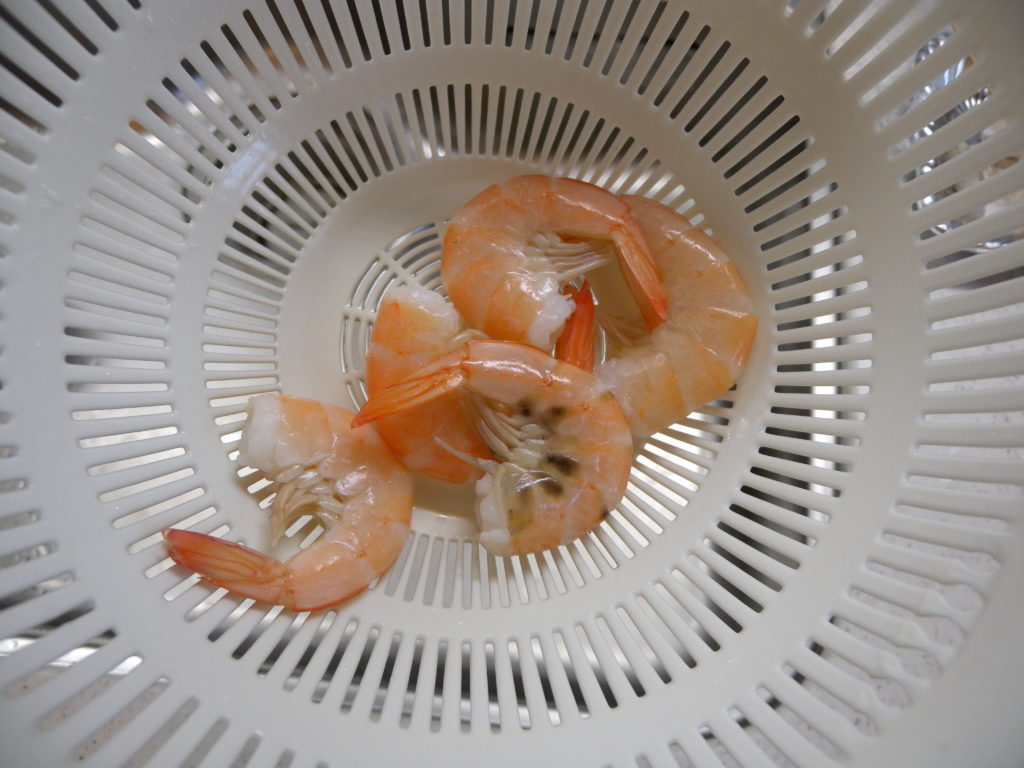
4) Peel the shells, place them in a freezer bag and freeze.
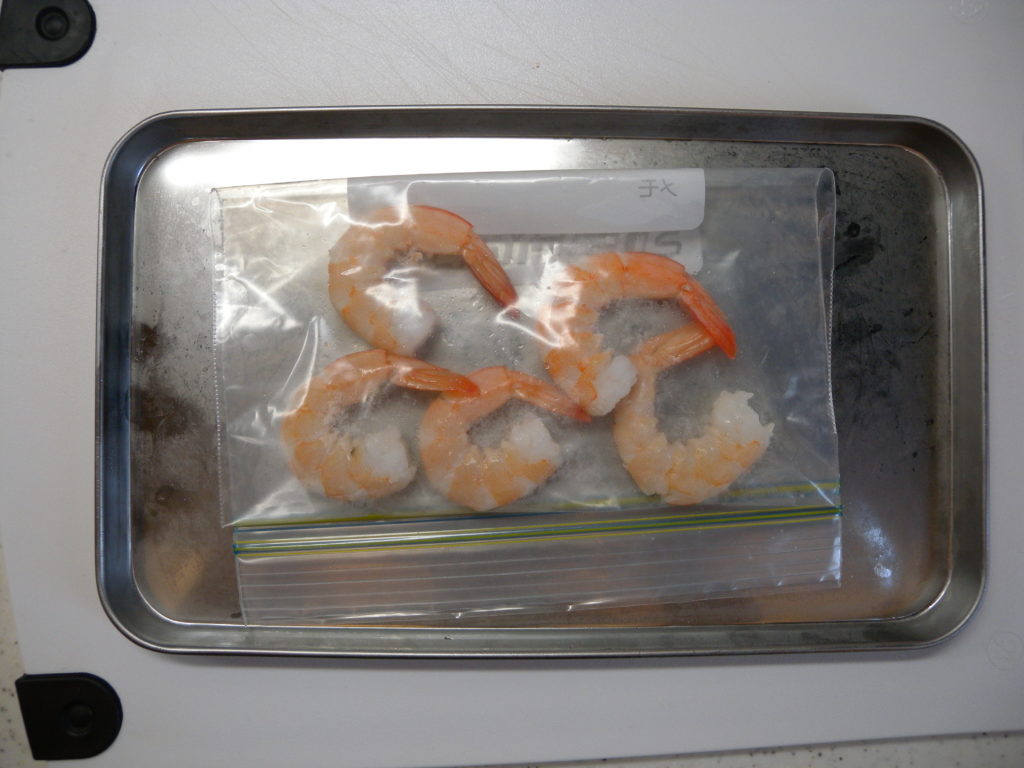
★Suitable for cooking that does not require heating, such as seafood salads.
How to defrost shrimp and storage period
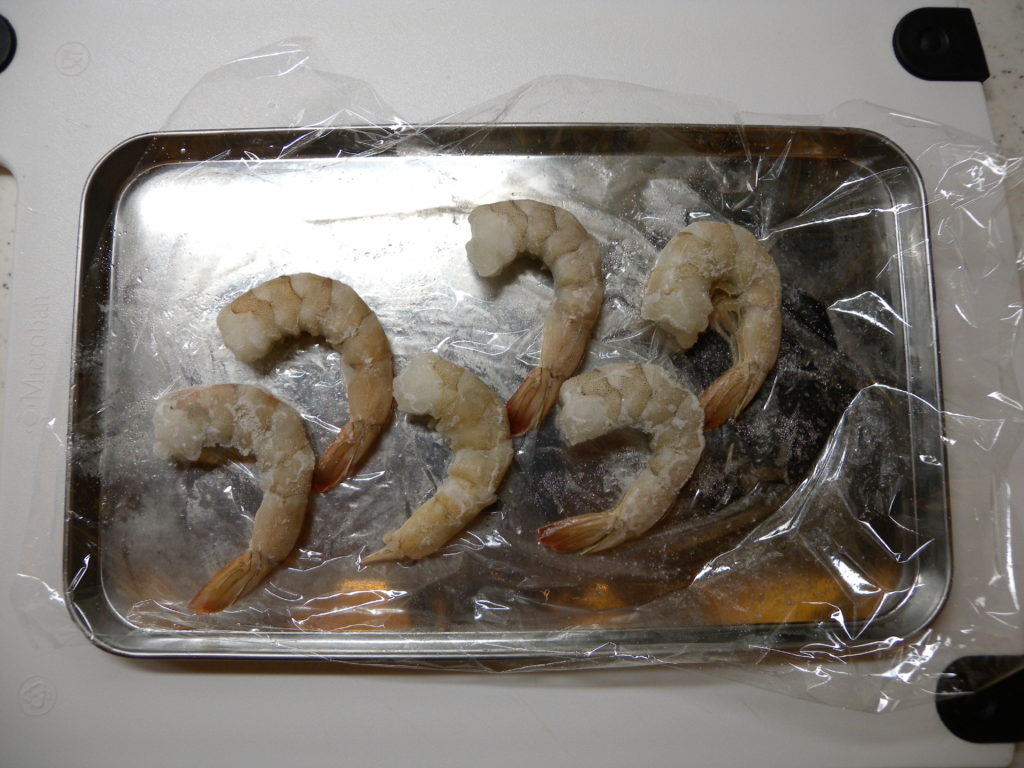
How to defrost shrimp
[Salt water thawing]
We recommend thawing frozen shrimp by soaking them in salt water.
Fill a bowl with water, add 1-3% salt (*) to the amount of water, and soak the amount of shrimp you want to defrost in it. Depending on the season and room temperature, it can be partially thawed in about 20 minutes.
The key is to use salt water, not just plain water. By using salt water, you can remove only the odor while preserving the umami flavor and plump texture.
*When defrosting shelled shrimp: Salt concentration 1%
When defrosting shelled shrimp: Salt concentration 3%
[Cooking while frozen]
Depending on the dish, you can use frozen shrimp as is.
・It must have been frozen after removing the back and shell.
・Long heating time
However, the pasta, pilaf, gratin, etc. introduced in the second half can be heated directly without thawing.
Shrimp storage period
[If frozen raw]
The approximate storage period is 2 to 3 weeks.
[If frozen after boiling]
The approximate storage period is 3 to 4 weeks.
If the above period is exceeded, the risk of freezer burn (moisture loss from food during freezing) increases, and the texture and flavor may deteriorate significantly. So, try to eat it as soon as possible.
5 easy recipes using shrimp
tomato cream sauce pasta
☑材料(1人分)
・冷凍えび 5尾
・玉ねぎ 1/4個
・トマト(水煮缶) 200g
・コンソメ顆粒 小さじ1/2
・生クリーム 大さじ3
・にんにく 1かけ
・塩こしょう 適量
・オリーブオイル 適量
<How to make>
1) Thaw the frozen shrimp. Thinly slice the onion and mince the garlic.
2) Heat a frying pan over medium heat and add olive oil and chopped garlic. When the garlic smells, add the onions and shrimp and stir-fry.
3) Add the tomatoes and consommé, bring to a gentle simmer, then add the fresh cream.
4) Once everything has boiled down to a nice consistency, season with salt and pepper, and finally add the pasta to complete the dish.
★If you don't like the sour taste of tomatoes, add a little sugar to make it milder.
★If it has been boiled down too much, adjust the amount with boiled pasta water or milk.
Shrimp mayo
☑材料(4人分)
・冷凍えび 400g程度
・酒 大さじ1
・片栗粉 大さじ2
・塩こしょう 少々
・サラダ油 大さじ3
・レタス 4枚
●マヨネーズ 大さじ3
●ケチャップ 大さじ1
●牛乳 大さじ1
●砂糖 大さじ1/2
<How to make>
1) Thaw the frozen shrimp, put it in a bowl, sprinkle with salt, pepper, and sake, and let it sit for a while (if you thawed it in salt water, sprinkle with pepper and sake).
2) Drain the water from (1) and sprinkle with potato starch until evenly coated.
3) Heat salad oil in a frying pan over medium heat and brown the shrimp on both sides.
4) While baking, mix together the seasonings.
5) Drain the lettuce thoroughly, tear it into bite-sized pieces, and place on a plate.
6) Mix the grilled shrimp with the sauce from (4) and arrange on top of the lettuce to complete the dish.
★Be careful not to overcook (3) as the shrimp will become tough.
Fried Shrimp
☑材料(3~4人分)
・冷凍えび 10尾
・塩こしょう 適量
●水 500cc
●重曹 大さじ1
●塩 大さじ1
◆強力粉 1/2カップ
◆水 1/2カップ
・パン粉 適量
<How to make>
1) Put the ingredients marked with ● into a bowl, soak the frozen shrimp, and let it sit for 20 minutes. After the time has passed, wipe off the moisture with kitchen paper.
2) Turn the shrimp belly side up and use a knife to make 4 to 5 incisions about 3mm in diameter.
3) Stretch the shrimp straight and press the belly side with your thumb and forefinger, centering on the area where you made the incision (you will hear a popping sound and the shrimp will be stretched straight).
4) Sprinkle salt and pepper on the straight shrimp.
5) Add the ingredients ◆ into a bowl, mix, and add the shrimp from (4).
6) Sprinkle breadcrumbs evenly and fry in oil at 170-180 degrees (approximate frying time is about 2 minutes).
Shrimp pilaf
<How to make>
1) Thaw the frozen shrimp and chop all the ingredients ◆.
2) Pour half the butter into a frying pan and fry the shrimp, vegetables, and corn.
3) Add the ● ingredients to (2), cover with a lid, and steam-fry over low heat for 5 minutes.
4) Once you've confirmed that the vegetables are cooked, add the rice and the remaining butter and stir-fry until they become fluffy.
5) Finally, add salt and pepper to taste and it's done (if the taste is bland, you can adjust the amount of consommé).
★Please decide the amount of shrimp according to your preference.
macaroni gratin
☑材料(2~3人分)
・冷凍えび 120g
・玉ねぎ 1/2個
・薄力粉 大さじ2
・牛乳 480ml
・マカロニ 50g
・バター 25g
・顆粒コンソメ 小さじ2
・塩こしょう 少々
・とろけるチーズ 適量
<How to make>
1) Thaw the frozen shrimp, cut the onion into wedges, boil the macaroni, and preheat the oven to 250 degrees.
2) Put butter in a frying pan and fry the shrimp and onions.
3) Turn off the heat, add the flour and mix.
4) Lower the heat to low and pour in the milk in 3 portions, stirring to prevent lumps from forming.
5) Add the boiled macaroni, consommé, salt and pepper to (4), simmer for 2-3 minutes over medium heat, then transfer to a heat-resistant plate.
6) Sprinkle cheese on top and bake in a preheated toaster oven (250 degrees) for about 10 minutes.
★Adjust the oven time while checking the baking color.
Conclusion
How do you freeze shrimp?
1. How to freeze raw
2. How to boil and then freeze
We introduced two methods.
If you're making pasta or pilaf, it's best to keep it raw, but if you're making things like seafood salad, it's best to boil it and then freeze it.
The shelf life is 2 to 3 weeks if frozen raw, and 3 to 4 weeks if frozen boiled.
The recommended way to thaw is to thaw in salt water. Calculate the amount of salt as 3% for shelled meat and 1% for unshelled fruit.
Freezing is the best way to preserve shrimp. If you have leftover shrimp, please try the method I introduced this time.








![[Storage period increased by 30 times! ] Achieving a stable supply of raw whitebait!](https://shunkashutou.com/wp-content/uploads/2016/11/579c55e6d32e1385c250e8e7c3ed59a71.jpg)
![[Sales increased 100 times! ] rapid freezing the signature menu “Ni-katsu sandwich”!](https://shunkashutou.com/wp-content/uploads/2016/11/IMG_02391.jpg)
![[Horse sashimi] We have significantly reduced waste loss with rapid freezer!](https://shunkashutou.com/wp-content/uploads/2016/11/5fda59d0cbcdabde18e58c3c58c09ed0.jpg)




![[Storage period increased from 3 days to half a year! ] Restaurants are expanding their business using wholesale and mail order!](https://shunkashutou.com/wp-content/uploads/2018/04/66c19942ab4ba346fdb64ccc04cde373.png)
![[Reduce loss from 200 kg of oysters to zero] Improve loss and expand business with rapid freezer](https://shunkashutou.com/wp-content/uploads/2018/06/19785ca583a8d3c4041c7c192d041b0d.jpg)












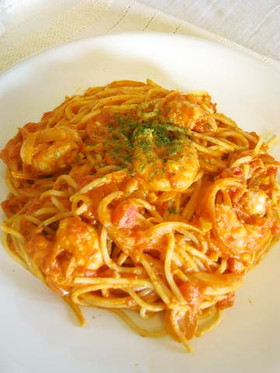
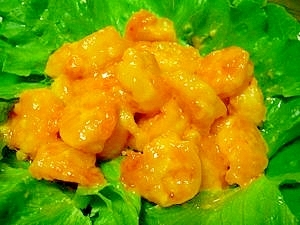
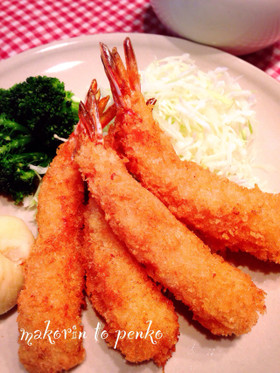
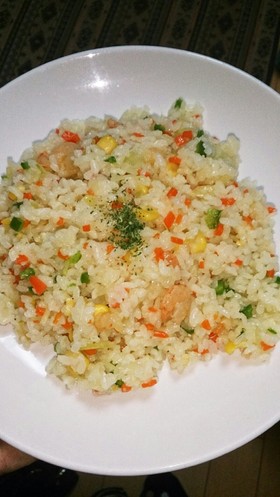
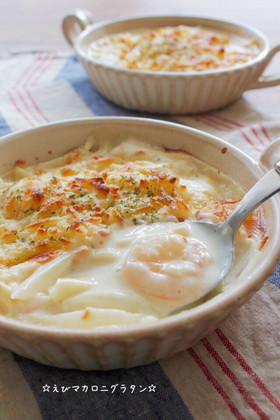


![[Just the meat from the field! ] Introducing how to freeze tofu and meat imitation recipes!](https://shunkashutou.com/wp-content/uploads/2023/10/100675242-768x512-1.jpg)
![[How long does frozen fish and meat last? ] Interesting expiration dates and tips to extend the shelf life](https://shunkashutou.com/wp-content/uploads/2023/08/f124221382987fe32d0ffda6b6f497c1.jpg)
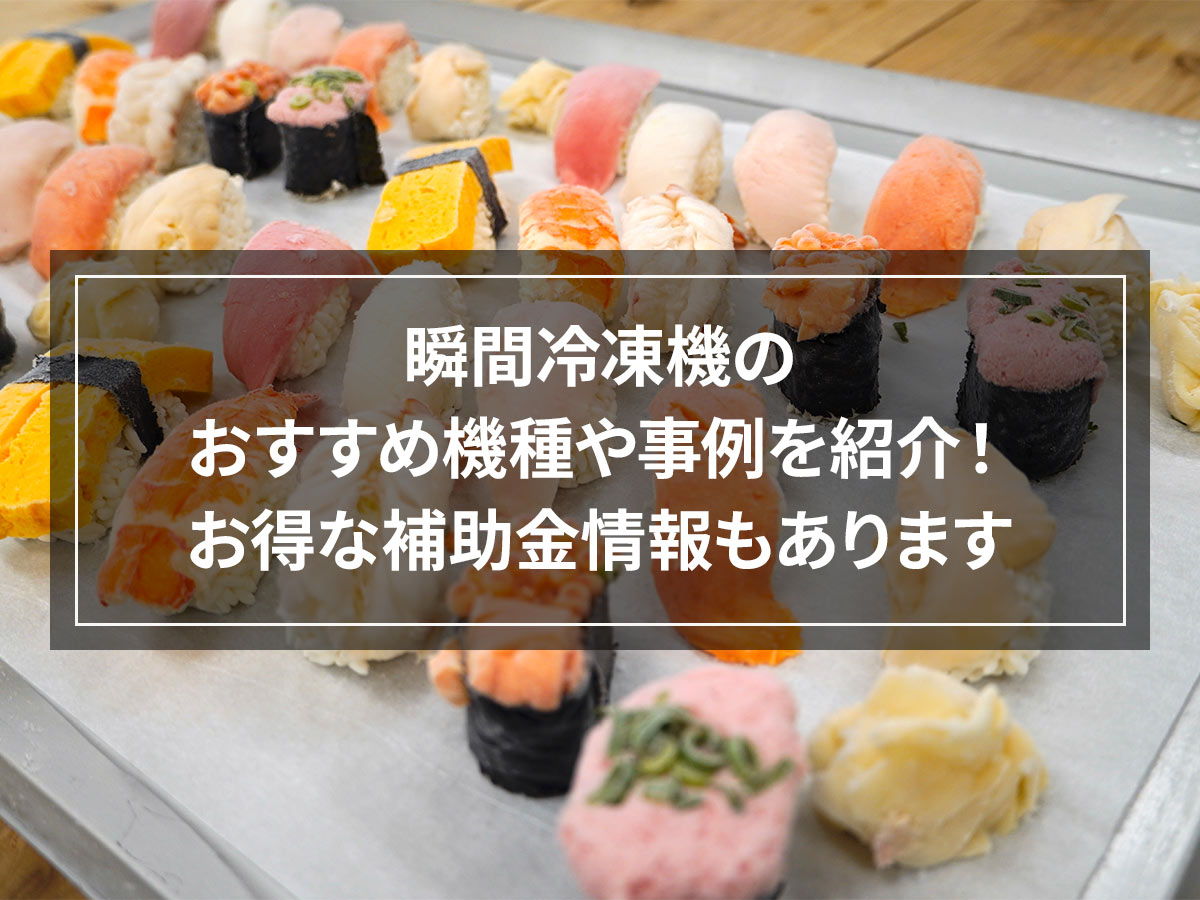
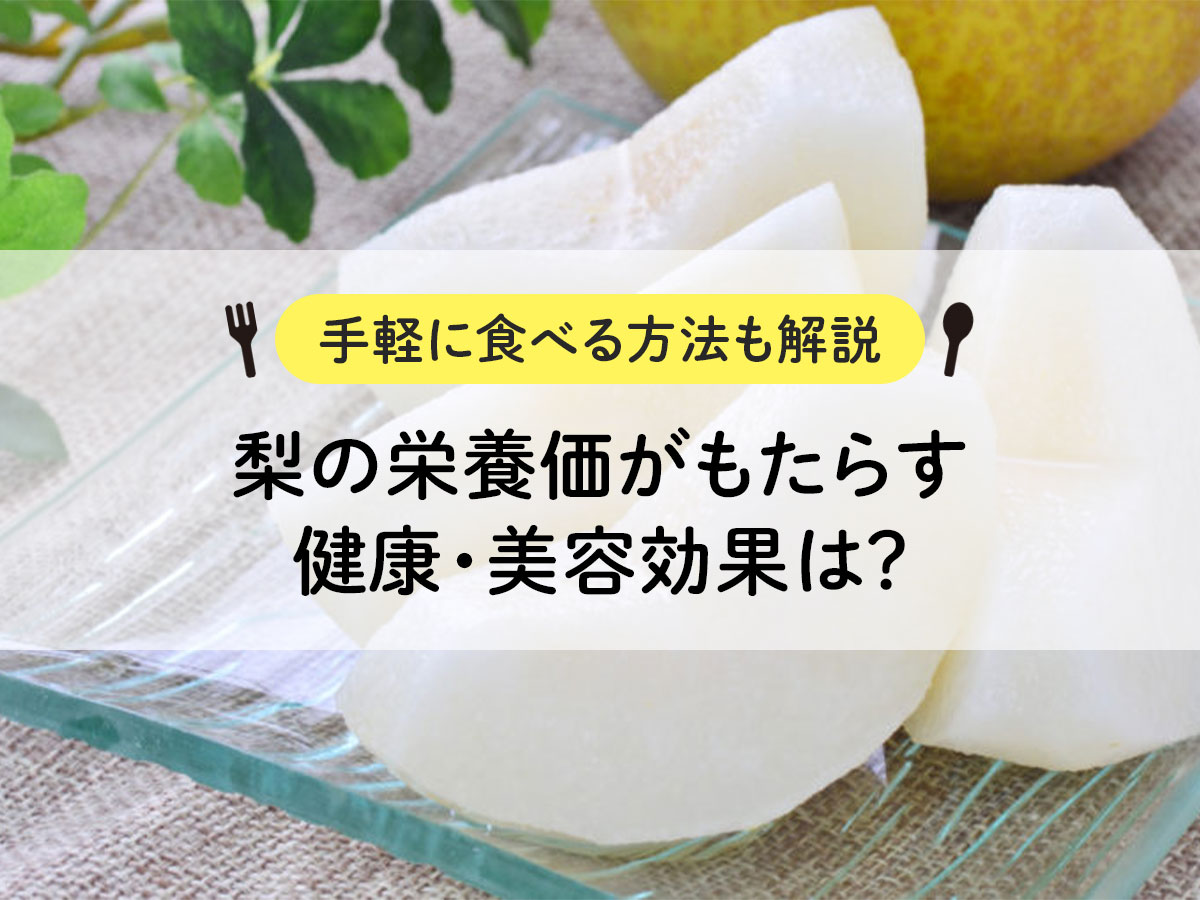
![How to freeze natto, expiration date, baby food and carefully selected recipes [Explanation with photos! ]](https://shunkashutou.com/wp-content/uploads/2023/07/055e5e865986b68d11c3f49f11ea6008.jpg)
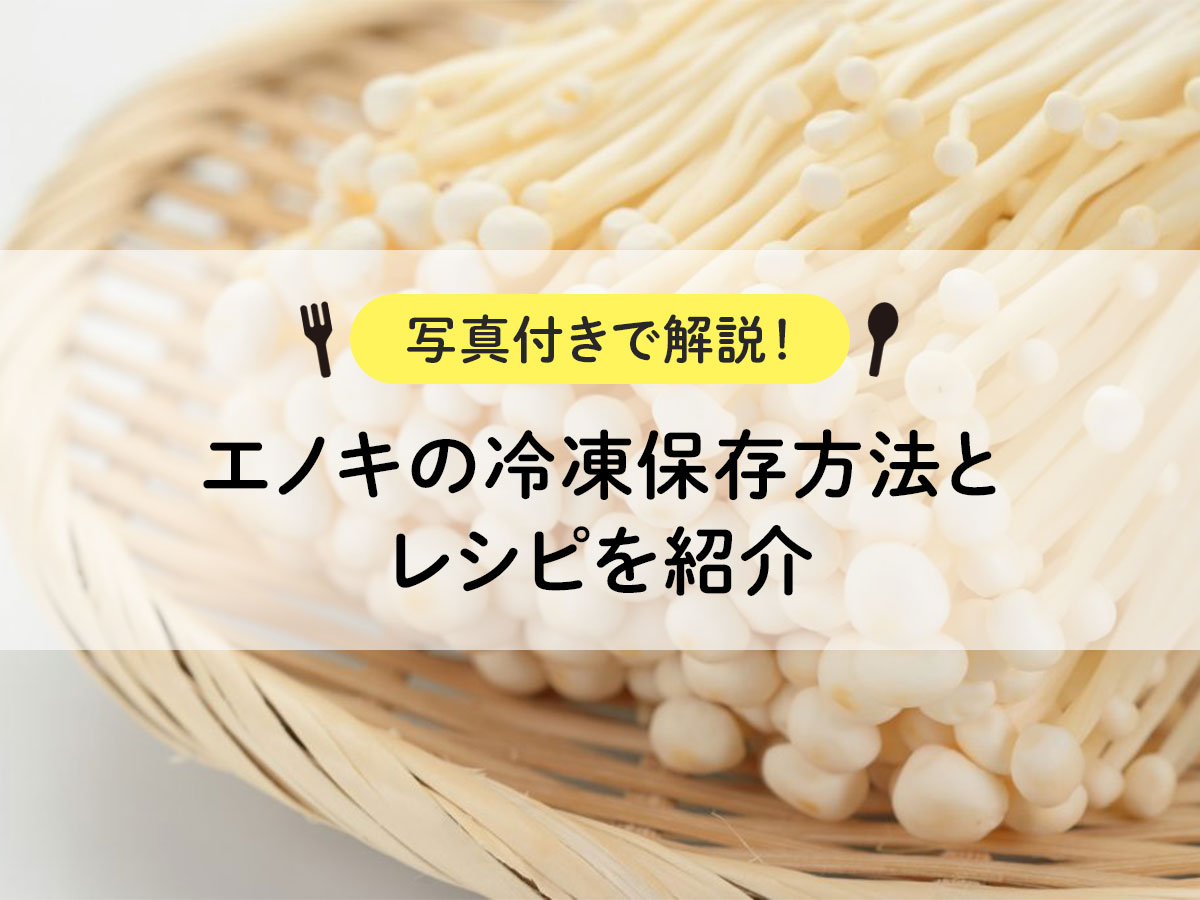
![How to freeze apples and what is their nutritional value? Perfect for baby food! [Explanation with photos! ]](https://shunkashutou.com/wp-content/uploads/2023/10/cf0380a4b371d2f43e0f0ed99c7344a2.jpg)
![Introducing the method and recipe for freezing green onions [Explanation with photos]](https://shunkashutou.com/wp-content/uploads/2023/09/negi5-768x512-1.jpg)
![[Save onions in the freezer! ] Introducing storage methods and recipes with photos](https://shunkashutou.com/wp-content/uploads/2023/10/9d2c1259f1c42d7a0e3b61af361e5da8.jpg)
![[Can it be frozen? ] Introducing a good way to freeze green peppers and side dish recipes](https://shunkashutou.com/wp-content/uploads/2023/09/30407f106c5c082468c66af0d40c5858.jpg)
![[Explanation with photos] How to freeze nagaimo, storage period, and 5 recipes!](https://shunkashutou.com/wp-content/uploads/2023/09/c46c238f2048d76de403dfd81ddad1f3.jpg)
![[Thorough Guide to Preserving Sweets] Introducing the freezing method, storage period, and thawing method in detail!](https://shunkashutou.com/wp-content/uploads/2023/10/bffcbc0b6e79bb1af6e05b930e11e949.jpg)
![[Includes grilling instructions] How to freeze hamburger steak, storage period, and carefully selected recipes!](https://shunkashutou.com/wp-content/uploads/2023/09/eb3a531f7fd023f973240f698c092b64.jpg)
![[Can it be frozen? ] 5 recipes for yogurt freezing and shelf life!](https://shunkashutou.com/wp-content/uploads/2023/10/yogurt-catch-768x512-1.jpg)
![[Explanation with photos! ] A good way to freeze lotus roots and recipes to use them!](https://shunkashutou.com/wp-content/uploads/2023/10/adac4ea3f269121c4cb5e74b323508f5.jpg)
![Introducing the method and recipe for freezing shimeji mushrooms [Explanation with photos]](https://shunkashutou.com/wp-content/uploads/2023/09/shimeji-768x510-1.jpg)

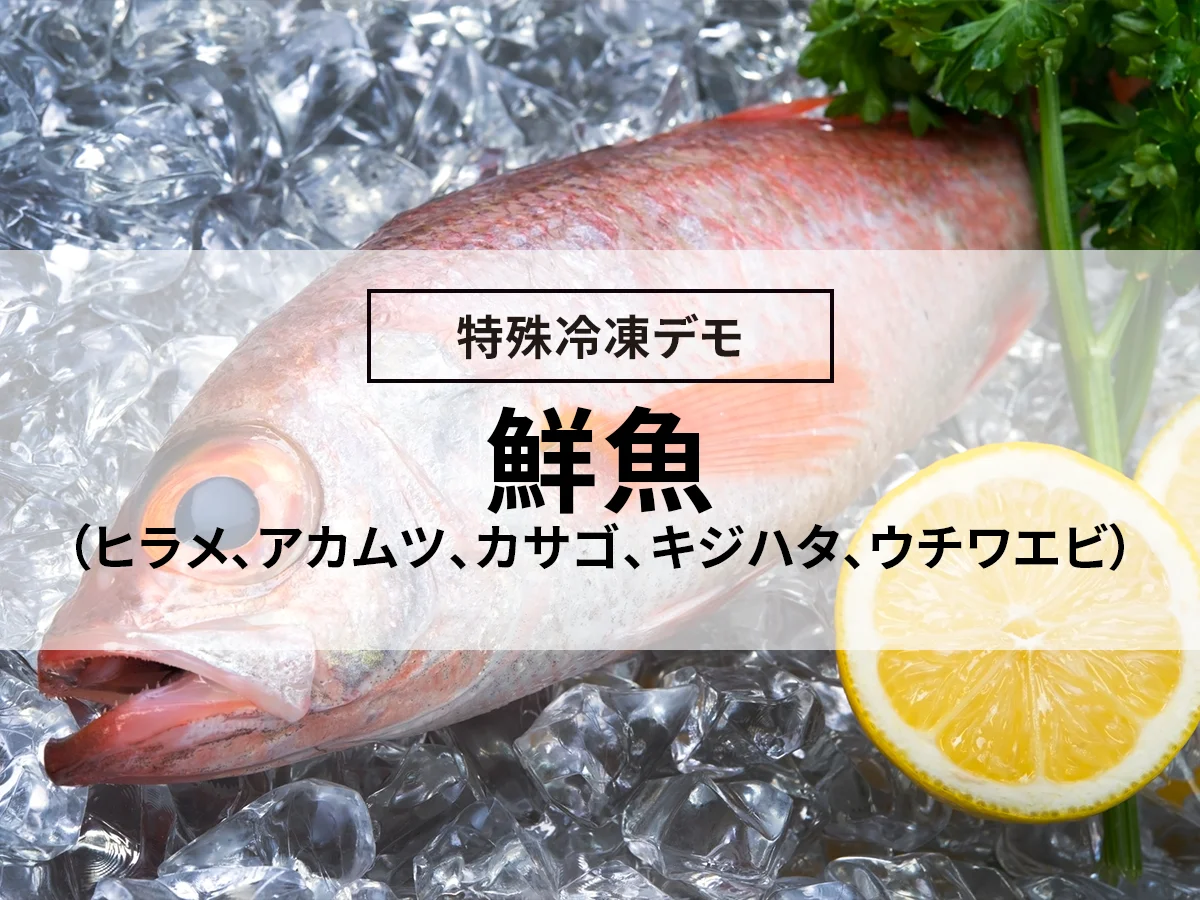
![[Need to know] 7 points to thaw frozen crab deliciously](https://shunkashutou.com/wp-content/uploads/2023/08/394440560c05fb5b512d75b81a3fae4f.jpg)

![[Explanation with photos] How to freeze peaches, storage period, and 5 recipes!](https://shunkashutou.com/wp-content/uploads/2023/09/b454a38d482a64b14d55d2560aa4193a.jpg)
![[Dramatically extends the shelf life of vegetables! ] What is blanching process?](https://shunkashutou.com/wp-content/uploads/2023/07/8fce721a563a0e86a740b4d11dc63766.jpg)
![How to freeze parsley, nutrition, and 5 easy recipes! [Solved with photos! ]](https://shunkashutou.com/wp-content/uploads/2023/09/paseri-768x513-1.jpg)
![[Osechi remake dishes too! ] Introducing the method and recipe for freezing black beans](https://shunkashutou.com/wp-content/uploads/2023/09/9bcd5b0667eef32b7c7daf786e01172f.jpg)
![[Can it be frozen? ] How to freeze konjac and diet recipes](https://shunkashutou.com/wp-content/uploads/2023/09/ec03b3e5cdefedf8f295de7ebb781752.jpg)
![[Freezing for a long time] 3 points to keep in mind when preserving vegetables](https://shunkashutou.com/wp-content/uploads/2023/08/5a2668284473e2bd93d9ade88bad2c0b.jpg)
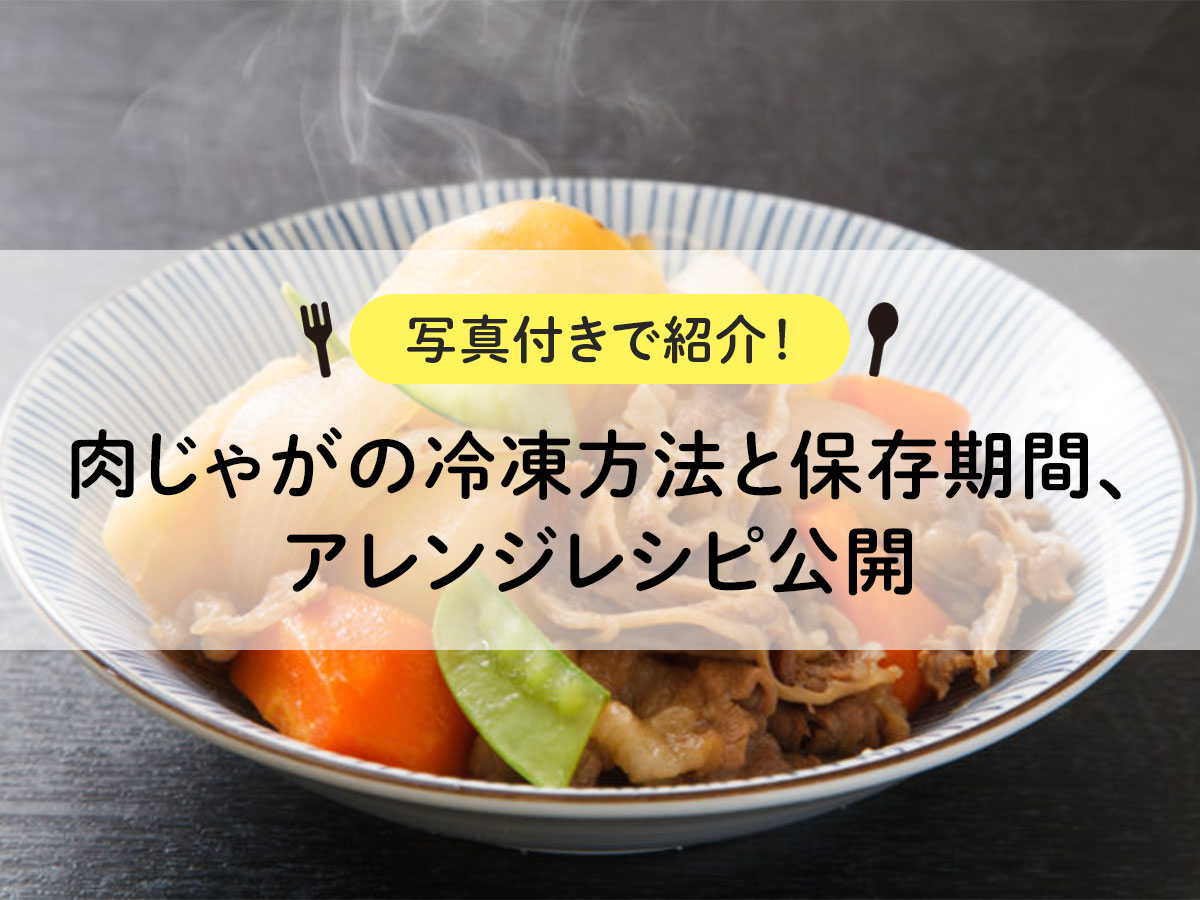
![[Introducing trick techniques! ] How to freeze and thaw pancakes](https://shunkashutou.com/wp-content/uploads/2023/09/4f2e9d04709f0c4e5c1769985a49ac8b.jpg)
![[Freezing Preservation Tips Series] How to freeze radish deliciously and reference recipes!](https://shunkashutou.com/wp-content/uploads/2023/08/0248ce56316e8dc86c8a3ea85ff1a479.jpg)
![[Easy and delicious] How to make and thaw frozen eggs, applied recipes](https://shunkashutou.com/wp-content/uploads/2023/08/6b20ec40a9845d4a62952c143f83456f.jpg)
![[Delicious, Convenient, Cheap] Recommended commercial frozen foods for restaurants to purchase](https://shunkashutou.com/wp-content/uploads/2023/07/business-frozen-food-1024x682-1.jpg)
![[Explanation of how to fry! ] How to freeze and thaw pork cutlet, remake recipe!](https://shunkashutou.com/wp-content/uploads/2023/10/0a4143ad8ea0cc6bb6fdab8c74fab407.jpg)

![How to freeze celery, nutrition, and 5 recipes! [Explanation with photos! ]](https://shunkashutou.com/wp-content/uploads/2023/09/serori-768x512-1.jpg)
![[Can it be frozen? ] Introducing how to freeze ham and delicious recipes!](https://shunkashutou.com/wp-content/uploads/2023/09/867d7b924bf17d95bedba60a6503e00e.jpg)
![[Explanation with photos! ] Shiitake mushroom freezing method and storage period, 5 recipes](https://shunkashutou.com/wp-content/uploads/2023/09/shiitake-768x512-1.jpg)
![[Explanation with photos] How to freeze meat sauce, storage period, and 5 recipes!](https://shunkashutou.com/wp-content/uploads/2023/09/efa7161a08e57ef763d9e19623c7669c.jpg)
![[Should be frozen! ? ] How to freeze and thaw bread, 5 carefully selected recipes!](https://shunkashutou.com/wp-content/uploads/2023/10/4691acc32cab80284fa0cddf72d58e95.jpg)
![How to freeze mizuna and 5 recipes! [Explanation with photos! ]](https://shunkashutou.com/wp-content/uploads/2023/09/b22c59559b7316b40d35d2555434791e.jpg)
![How to freeze potatoes and a great time-saving recipe! [Moms must see! ]](https://shunkashutou.com/wp-content/uploads/2023/10/potato1-768x512-1.jpg)
![Freezing garlic, storage period, and 5 recipes! [Explanation with photos! ]](https://shunkashutou.com/wp-content/uploads/2023/10/30693b4b122ff6c57afff367b35bc861.jpg)
![[Explanation with photos! ] How to freeze beef, storage period, and 5 recipes!](https://shunkashutou.com/wp-content/uploads/2023/07/8717f2a867f52157bab47841b0f29019.jpg)
![[Tips for making egg rolls that can be frozen] Introducing freezing methods, storage periods, and recipes!](https://shunkashutou.com/wp-content/uploads/2023/10/tamagoyaki-768x512-1.jpg)
![[Explanation with photos! ] How to freeze green beans, storage period, and 5 recipes](https://shunkashutou.com/wp-content/uploads/2023/09/f3dbbe5b1d05a50f514a833efdceced9.jpg)



